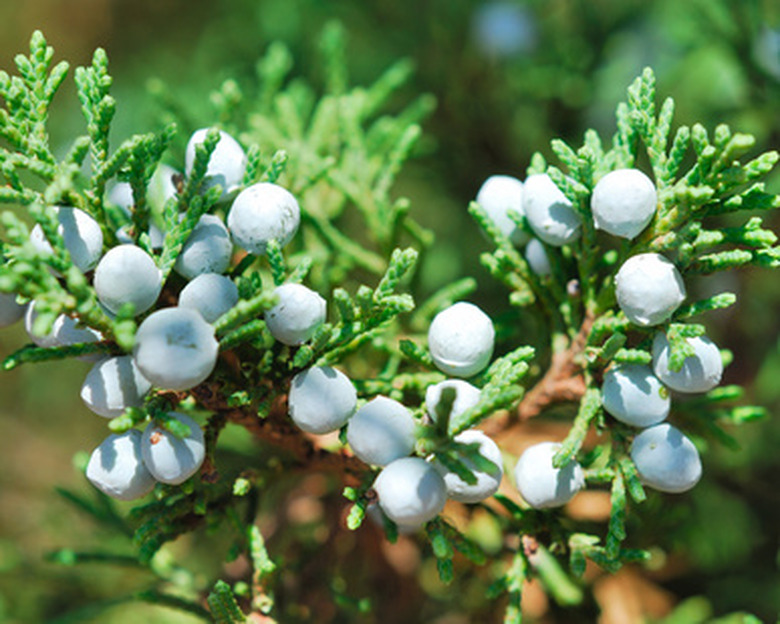Cedar Tree Types
The genus cedar is composed of four species that are evergreen, coniferous and monoecious trees. The needles on the cedar tree grow in whorls, or coil-shaped foliage. Cedar trees need plenty of space to grow due to their large height and width. Some cedar trees, like the blue atlas, grow more than 100 feet. These hardy growers prefer sunny to partially shaded spots and well-drained soil.
Eastern Red Cedar
Eastern red cedar is a hardy evergreen tree with a moderate to rapid growth rate. Its dense upright shape is pyramidal in form. When mature, the Eastern red cedar becomes irregular and pendulous. The tree grows between 30 to 40 feet high and 20 feet wide, creating a striking tree in the landscape. The leaves are prickly, scale-like and green during the summer. During winter, the leaves change to grayish green. The blue berries on the cedar tree are a subtle contrast and emerge in the fall to last through the winter. The Eastern red cedar prefers full sun and well-drained soil. It can tolerate a wide range of soil types, making for a versatile evergreen tree. Easter red cedar trees are ideal for privacy hedges and easy to transplant. These tough, unfussy trees are also drought and heat tolerant. The USDA hardiness zones are 2 to 9.
- The genus cedar is composed of four species that are evergreen, coniferous and monoecious trees.
- These tough, unfussy trees are also drought and heat tolerant.
Deodar Cedar
The deodar cedar is an evergreen tree with fine texture and a moderate growth rate. The pyramidal form has pendulous or cascading branches. The sharp needles are bluish green and range from 1 to 2 inches long. The cones on the deodar cedar are also bluish green and range from 3 to 4 inches long. Deodar cedar trees grow between 40 and 70 fee tall and 30 to 40 feet wide, making for a striking tree in the landscape. It prefers full sun to partial shade and well-drained, slightly dry soil. The deodar cedar needs protection from wind, so be sure to plant in a suitable growing site. The USDA hardiness zones are 7 to 8.
- The deodar cedar is an evergreen tree with fine texture and a moderate growth rate.
- The cones on the deodar cedar are also bluish green and range from 3 to 4 inches long.
Incense Cedar
Incense cedar is tough evergreen tree with a slow to moderate growth rate. Its broad branches are spreading with medium texture. The incense cedar grows between 30 and 70 feet tall and 10 to 20 feet wide. The incense cedar's leaves are shiny, dark green and hold their color in the winter. The cones are reddish brown in the fall and remain on the tree into the spring. Incense cedar prefers full sun to light shade and moist, well-drained soils. It tolerates a wide range of soil types and is adaptable. Incense trees are heat and drought tolerant but difficult to transplant. The USDA hardiness zones are 5 to 8.
- Incense cedar is tough evergreen tree with a slow to moderate growth rate.
- The incense cedar's leaves are shiny, dark green and hold their color in the winter.
